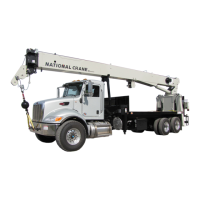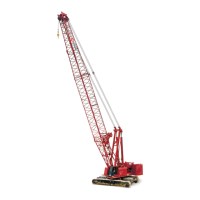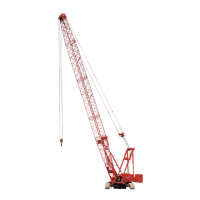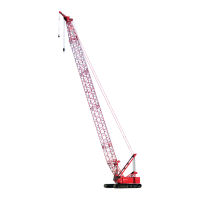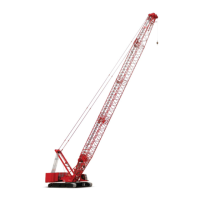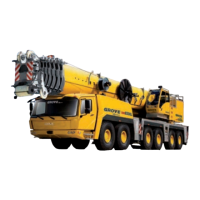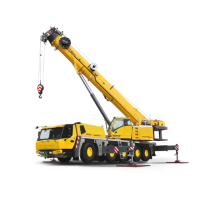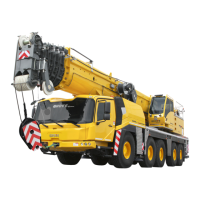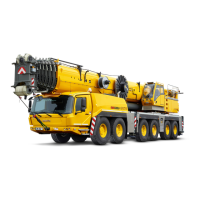MAINTENANCE 999 LUFFING JIB OPERATOR MANUAL
6-10
Published 05-15-17, Control # 043-09
BLOCK-UP LIMIT INSTALLATION AND
ADJUSTMENT
A block-up limit control (also called anti-two-block device) is
a two-blocking prevention device which automatically stops
the load drum from hoisting and the boom from lowering
when a load is hoisted a predetermined distance.
DEFINITION: Two-blocking is the unsafe condition in
which the load block or the weight ball contacts the sheave
assembly from which either is suspended.
Two-blocking can result in failure of sheaves and wire
rope, possibly causing load to fall.
The block-up limit controls consist of the following
components (see Figure 6-5
):
• Normally closed limit switch assembly fastened at any or
all of the following locations:
- Lower boom point
- Upper boom point
- Luffing jib point
- Luffing Jib Intermediate Suspension
- Fixed jib point (on luffing jib)
- Universal anchor joint
• Weight freely suspended by chain from each limit switch
actuating lever (weight encircles load line as shown in
Figure 6-8
).
• Lift block fastened to load line or lift plates fastened to
load block (see Figure 6-8
).
Operation
See Figure 6-5 and Figure 6-9 for component identification.
NOTE: See wiring diagrams in Boom Wiring Drawing in
Section 4.
Block-Up Limit Control Deactivated
During normal operation, the weight overcomes the spring
force and rotates the actuating lever away from the limit
switch lever. This action allows the limit switch to close the
load drum up and boom/luffing jib down electric circuits.
Therefore, the load can be hoisted and the boom/luffing jib
can be lowered.
Block-Up Limit Control Activated
When the weight is lifted by the lift block or the lift plates,
spring force rotates the actuating lever against the limit
switch lever. This action causes the corresponding limit
switch to open the load drum up and boom/luffing jib down
electric circuits.
The load drum and boom hoist pumps stroke to off. At the
same time, the load drum and boom/luffing jib parking brakes
apply to stop the load drum from hoisting and the boom/
luffing jib from lowering.
Installation
The block-up limit controls must be installed according to
Boom Wiring, Limits, and Load Indicator Electrical Assembly
drawing at end of this section.
See Figure 6-8
for installation of the weights.
Storing Electric Cable
The electric cables for the boom, fixed jib, and luffing jib are
long enough to accommodate the maximum length of each
attachment.
Store the excess cable for the boom and luffing jib on the reel
mounted on either butt (Figure 6-6
). The reel is equipped
with a locking pin. Disengage the locking pin to allow the reel
to be wound. Engage the locking pin to lock the reel in
position. The power supply cable to the reel must be
disconnected before the reel can be wound.
Store the excess electric cable for the fixed jib by winding it
around the brackets on the fixed jib butt (Figure 6-6
).
WARNING
Two-Blocking Hazard!
Block-up limit control is a protective device designed only
to assist operator in preventing a two-blocking condition.
Any other use is neither intended nor approved.
Block-up limit control may not prevent two-blocking when
load is hoisted at maximum single line speed. Operator
shall determine fastest line speed that allows block-up
limit control to function properly and, thereafter, not
exceed that line speed.
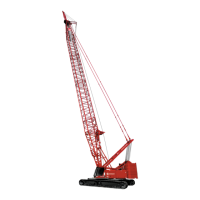
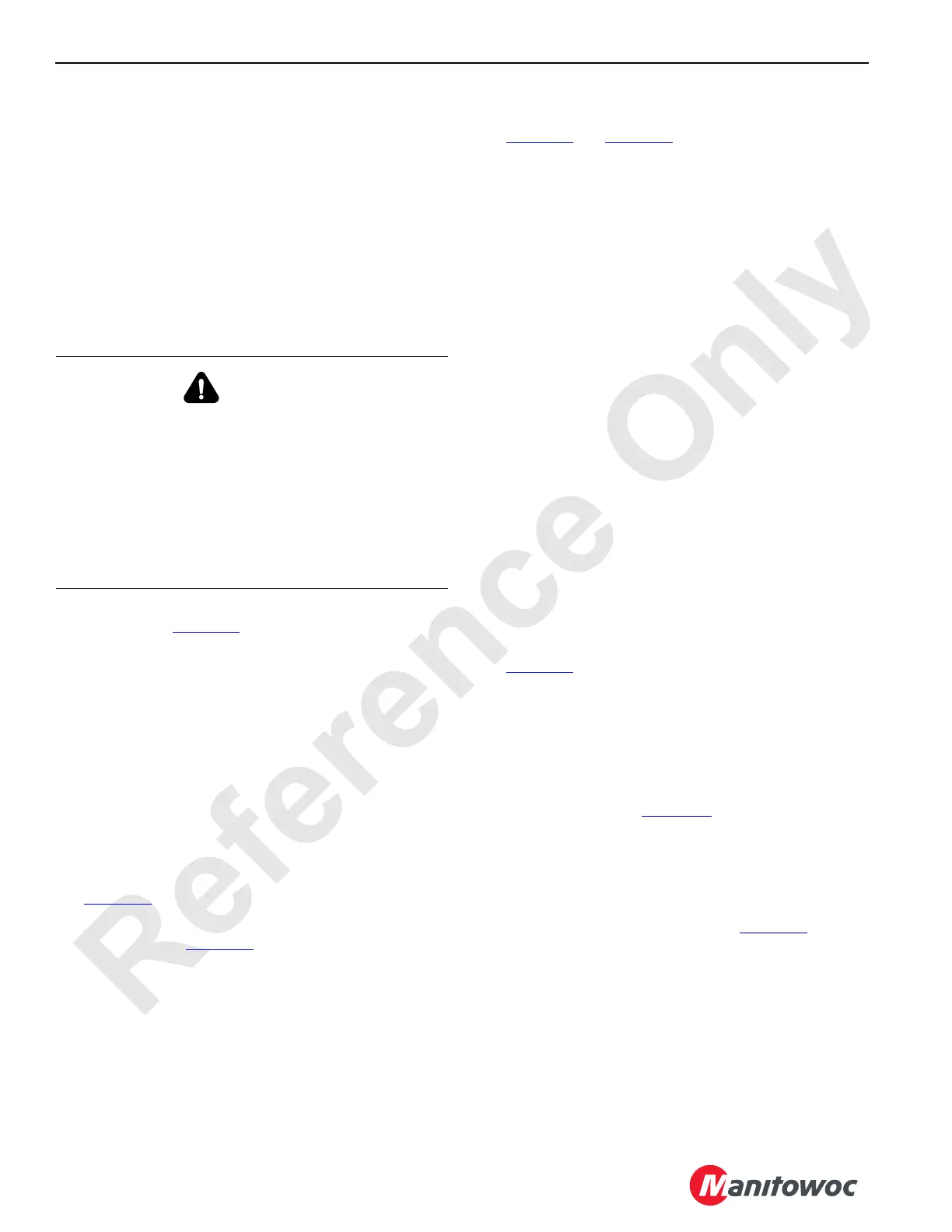